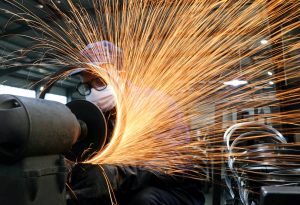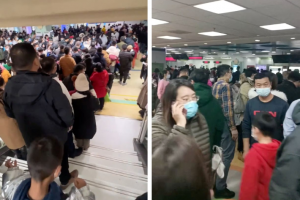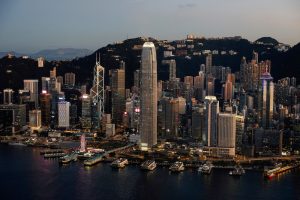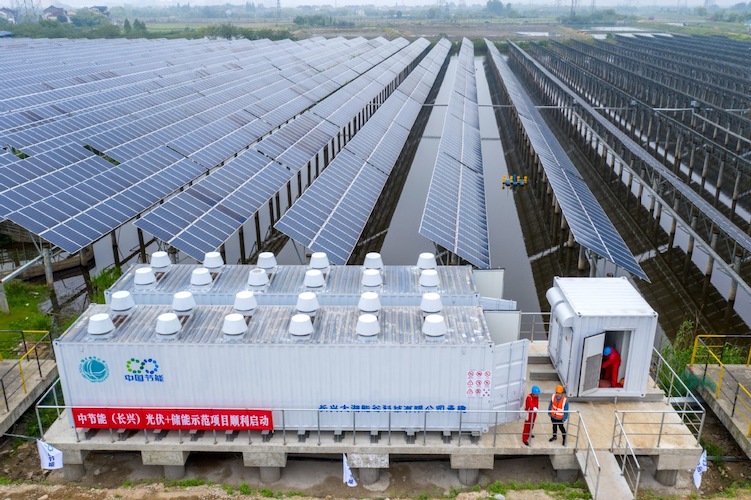Workers across Asia downed tools in May as China’s coronavirus pandemic restrictions dislocated factory activity, disrupted supply chains and crimped demand.
Manufacturers slowed activity last month in countries ranging from Japan to Taiwan and Malaysia, surveys showed, adding to the struggle for some economies already under strain from surging raw material costs.
China’s Caixin/Markit Manufacturing Purchasing Managers’ Index (PMI) stood at 48.1 in May, up from 46.0 the previous month but staying below the 50-point threshold that separates contraction from expansion, a private survey showed.
The outcome was in line with Tuesday’s official data that showed China’s factory activity fell at a slower pace in May. While Covid-19 curbs are being eased in some cities, they continue to weigh heavily on confidence and demand.
Lockdowns in China have snarled regional and global logistics and supply chains, with both Japan and South Korea reporting sharp declines in output.
“Soaring inventories of finished goods in China suggest that, contrary to most expectations, recent lockdowns are likely to prove disinflationary domestically,” Julian Evans-Pritchard, senior China economist at Capital Economics, said.
“The glut of supply in China is likely to weigh on export prices too,” he added.
Meanwhile, Japan’s manufacturing activity grew at the weakest pace in three months in May and manufacturers reported a rise in input costs, the PMI survey showed, as fallout from China lockdowns and the Ukraine war pressured the economy.
The final au Jibun Bank Japan PMI fell to a seasonally adjusted 53.3 in May from the previous month’s 53.5, marking the slowest pace since February.
Regional Factory Activity Hit
“Both output and new orders rose at softer rates, with the latter rising at the weakest pace for eight months amid sustained supply chain disruption and raw material price hikes,” Usamah Bhatti, an economist at S&P Global Market Intelligence, said.
“Disruptions were exacerbated by renewed lockdown restrictions across China, and contributed to a further sharp lengthening of suppliers’ delivery times.”
Factory activity in the Philippines also slowed to 54.1 in May from 54.3 in April, while that for Malaysia fell to 50.1 from 51.6 in April, PMI surveys showed. Taiwan’s manufacturing activity stood at 50.0 in May, down from 51.7 from April.
In a glimmer of hope, India’s factory activity expanded at a better-than-expected pace last month as overall demand remained resilient despite persistently high inflation, encouraging firms to hire at the fastest rate since January 2020, according to a private survey.
The Manufacturing Purchasing Managers’ Index , compiled by S&P Global, came in at 54.6 in May, slightly lower than April’s 54.7 but above the 50-level separating growth from contraction for an eleventh month.
Another positive note was registered by South Korea’s exports, which grew at a faster pace in May than a month earlier, data showed on Wednesday, as a rise in shipments to Europe and United States more than offset the fallout from China’s restrictions.
South Korea’s monthly trade data, the first to be released among major exporting economies, is considered a bellwether for global trade.
“[South Korean] data indicate that weak production and investment will be the main obstacles to growth in the second quarter, but are partially offset by a solid recovery in services and consumption,” Min Joo Kang, senior economist for South Korea and Japan at ING, said.
- Reuters, with additional editing by George Russell
READ MORE:
Foxconn Plans to Make Chips for EVs, Says Supply Chains Key
US Targets Taiwan Tech Tie-Ups as Supply Chain Solution
China Copper Supply at 10-Year Low on Lockdown Snarls: Chart
























